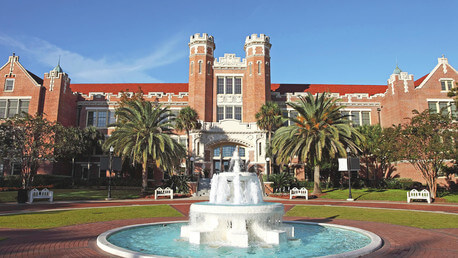Tuition, Cost & Aid
Affordability and Cost
Average Net Price Average net price for full-time, first-time degree/certificate-seeking undergraduates paying the in-state or in-district tuition rate who were awarded grant or scholarship aid from federal, state or local governments, or the institution. Other sources of grant aid are excluded. Aid awarded anytime during the full aid year is included.
Average net price is generated by subtracting the average amount of federal, state or local government, or institutional grant and scholarship aid from the total cost of attendance. Total cost of attendance is the sum of published tuition and required fees (lower of in-district or in-state), books and supplies and the weighted average room and board and other expenses.
Average net price is generated by subtracting the average amount of federal, state or local government, or institutional grant and scholarship aid from the total cost of attendance. Total cost of attendance is the sum of published tuition and required fees (lower of in-district or in-state), books and supplies and the weighted average room and board and other expenses.
$9,740
Average Net Price By Family Income
Tuition
| In-State Tuition In-state tuition is the tuition charged by institutions to those students who meet the state's or institution's residency requirements. In-district tuition is the tuition charged by the institution to those students residing in the locality in which they attend school and may be a lower rate than in-state tuition if offered by the institution. | $3,366 |
| Out-of-State Tuition Out-of-state tuition is the tuition charged by institutions to those students who do not meet the state's or institution's residency requirements. Out-of-district tuition is the tuition charged by the institution to those students not residing in the locality in which they attend school. | $12,271 |
Additional Costs
| Books and Supplies | $2,000 |
| Tuition Payment Plan | Yes |
Financial Aid: visit page
Financial Aid Email: financialaid@polk.edu
Aid & Grants
0
100
34%
Need Met
Students Receiving Gift Aid Percent of undergraduate students awarded federal gift aid. Federal gift aid includes any grant or scholarship aid awarded, from the federal government, a state or local government, the institution, and other sources known by the institution. Students Receiving Grants Percent of undergraduate students awarded grant aid. Grant aid includes any grant or scholarship aid awarded, from the federal government, a state or local government, the institution, and other sources known by the institution. Students receiving state aid Students receiving federal aid
33%
Average Aid Per Year
$3,168
33%
Average Federal Grant Aid Per Year
$2,811
Average Institution Grant Aid Per Year
$871
32%
Average State Grant Aid Per Year
$1,084
66%
Average Federal Grant Aid Per Year
$2,811
Total Non-Need-Based Scholarships/Grants
$102,852
Student Loans
Students Borrowing Loans Loans to students - Any monies that must be repaid to the lending institution for which the student is the designated borrower. Includes all Title IV subsidized and unsubsidized loans and all institutionally- and privately-sponsored loans. Does not include PLUS and other loans made directly to parents.
7%
Average Loan Amount Per Year
$2,999
Students receiving federal loans
7%
Average Federal Loans Per Year
$2,999
Average Debt at Graduation The median federal debt of undergraduate borrowers who graduated. This figure includes only federal loans; it excludes private student loans and Parent PLUS loans.
$6,500
Loan Default Rate
6%
US National: 7%
Median Monthly Loan Payment The median monthly loan payment for student borrowers who completed, if it were repaid over 10 years at a 5.05% interest rate.
$100
What Students Are Saying
Prices for classes and books and all are fairly cheap if you're a Florida resident.
Faith from Bartow, FL
If you are a Florida resident you will save a lot of money. Financial Aid is great, so please sign up for it on the first of every January. It will help you save from money. Trust me.
Jeannie from Lakeland, FL
Cost efficient and high quality; you couldn't ask for more.
Marisa from Winter Haven, FL
Public high school students who enroll in the collegiate high school receive full tuition for classes and course materials from the college. Dual-enrolled high school students receive full class tuition but are expected to pay for course materials. The latter is also only allowed to apply for 9 credit hours per semester, as they are expected to make up the rest of their high school credits (per semester) through their high school of choice, be it public or home school affiliated.
Laura from Mulberry, FL












